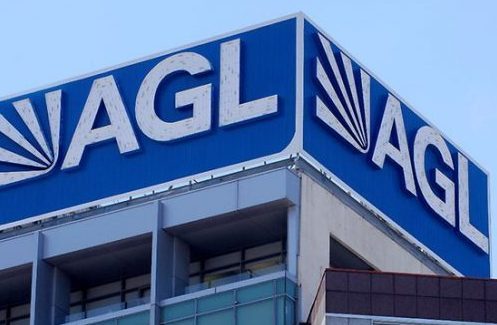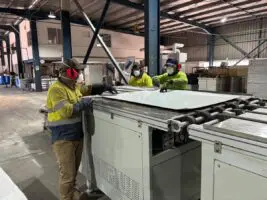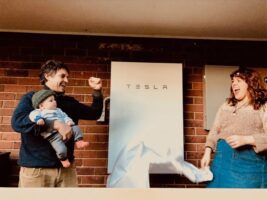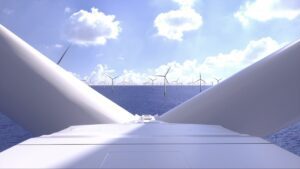There are two principal theories about the future of incumbent energy utilities. One is that they can adapt and evolve with new technologies. The other holds that you can’t teach an old dog new tricks, and they will inevitably go the way of Kodak, broadsheets and Peabody Coal.

The evolution versus revolution scenarios are much discussed in Australia and overseas among consultants, executives and within board rooms, who are wrestling with the concept of the big switch: for this is as much a cultural issue as it is a business and technology change. Some wish nostalgically for the status quo, others are pushing for a rapid transition.
Already, some of the world’s biggest utilities are choosing to slough off their 20th century assets – such as their legacy fossil fuel and nuclear generation plants – into one company, and put their 21st century assets – smart grids, solar, battery storage, electric vehicle and energy management systems – in another.
Notably, this is happening in countries like Germany, where businesses like RWE and E.ON can be in no doubt about the strength and resolve of the bipartisan political push to cut emissions and change the energy system. They reasons that the old and new cannot co-exist, there is an overwhelming conflict of interest.
In Australia, companies such as AGL Energy are going down a different route: convinced, possibly because of the indifferent attitude of Australi’s policy makers and the raw economic power and regulatory influence of the incumbent oligopolies, that they can evolve. It’s a strategy based on the principal, or at least the hope, that they can have their cake and eat it too.
It explains the seemingly contradictory signals that came out of AGL Energy’s investors’ day on Monday, and from many of their public announcements on the future of energy.
On one hand, they are taking a leading role in the provision of solar and battery storage products, electric vehicles and new concepts such as virtual power plants. On the other hand, it is difficult to imagine another company more entrenched into the economics of brown and black coal generation.
And on Monday, AGL Energy further raised the ire of environmental groups by announcing it was looking at investing another $300 million in infrastructure to import liquefied natural gas from overseas.

This is the inherent contradiction in CEO Andrew Vesey’s strategy. Vesey quite clearly “gets it” when it comes to new technology and the disruptive forces that lie before him. But for the next few decades at least, AGL’s profits, and shareholder satisfaction, will be underwritten by its massive portfolio of brown coal-fired generators in Victoria’s Latrobe Valley and black coal generators in NSW, along with its market-dominant gas plants in South Australia.
Vesey’s task is to exploit that profit centre as much as he can – hence he and his peer group’s push for capacity payments for his fossil fuel fleet, its resistance to many new market rule proposals that could hasten competing technologies, and their dogged resistance to network operators entering their household market. His main goal is to win time to try to configure the industry in the image of his new business model, whatever that turns out to be.
Vesey is obviously mindful of the experience of possibly the most progressive utility in the US, NRG. It had a visionary leader, David Crane, who spoke powerfully of the radical change ahead for the industry and the need to embrace it.
But there’s an old warning in the stockbroking and funds management industry that it is great to be in front of the pack, but damn risky to be too far ahead. In the end, Crane couldn’t take the market analysts with him, and nervous investors effectively forced his departure. NRG is still evolving, but trying to hold the market’s hand as it goes.
Vesey is taking a similar view.
It is interesting, for instance, that he has abandoned the idea of creating a “new AGL” to compete with the old. The new energy division will not operate, as was first envisaged, as a separate operating entity building its own fiefdom of new technology to compete against the incumbents.
Instead, it will operate as a kind of R&D test lab, trialling and developing new technologies and business ideas and then flicking them over to the relevant operating division (retail or wholesale markets) to incorporate into their business strategy. These divisions are expected to absorb those technologies into their current business and evolve with them.
“We are ripe for disruption,” Vesey admitted on Monday (as he does in most of his presentations). “We know where the threats to the business are.”
And that, judging by the presentations and the discussion at the analyst day briefing, is around customer satisfaction. AGL speaks in terms of digital platforms, energy orchestration and customer advocacy – data and customers, not big power plants, are the key assets of the future.
AGL reasons that a disengaged customer on a “narrow bandwidth” (I took that to mean one that pays the bills and just rings up and complains occasionally) is at least a customer.
And they are counting on parlaying their standing as a known entity, and not a fly-by-nighter, into keeping such customers on board and using new technologies as a means of customer retention. Remember this is an industry where the major companies have historically “churned” up to one-quarter of their customers a year.
Other incumbents such as Origin Energy are taking the same view (or hope). AGL’s new head of new energy, Elisabeth Brinton, says she spent a whole bunch of time listening in on customer calls. “When they thought about solar and battery storage, they said, I’m choosing AGL because I know who you are, I can trust you,” she said.
That may well be the case for many, but as Steve Harris, the CEO of new community retailer Enova Energy, points out today, the political and social swings that brought the world Brexit and Donald Trump are likely to be repeated in the energy industry.
That is one of the powers of decentralised energy, or energy democracy. “Communities feel they are not well serviced by existing monopolies and the dominant incumbents,” Harris says. “People are now starting to put their hands up and say they want something different.
“There is a big groundswell of people, particularly around renewable energy, who want to get a better solar feed-in tariff, who don’t feel they are being well served by the big energy retailers, and want to keep profits in the local community.”
The biggest threat to the industry, therefore, may be a combination of those disaffected customers empowered by new technologies that give them options and choices that the incumbents could never have imagined.
AGL, indeed every retailer or utility dealing with consumers, is tied to an energy system that is locked into the heavy cost of sunk investment in networks and generation that means, try what may, Australian consumers are faced with some of the highest electricity prices in the world.
When technologies and services can offer, as they surely will, a significant discount on current electricity costs and the added lure of independence, the industry as it currently exists will face major disruption.
And, for all the talk of agile capital, digital transformation, energy orchestration, and consumer engagement and advocacy, and their hiring of marketing specialists to tell them about their market perception, customer satisfaction is not yet part of the management team’s key performance indicators.
Profits from the coal and gas generators most certainly are. “The rigid old ways of thinking about utilities is binding and chaffing on us,” Vesey notes. And until his executive team’s interests are fully aligned with what must be the two long-term goals of the company – decarbonsation and customer retention – they will continue to be so.








